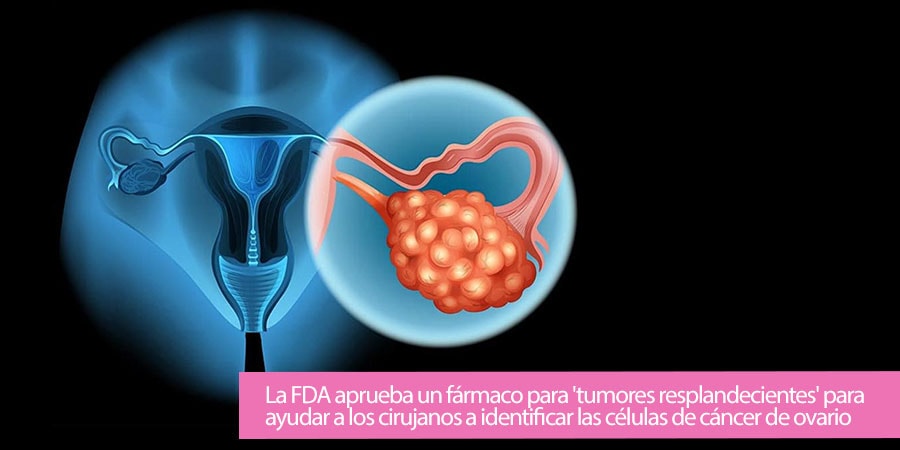
FDA Approves ‘Glow Tumors’ Drug to Help Surgeons Identify Ovarian Cancer Cells.
Cytalux (pafolacianince), a drug that binds to ovarian cancer tissue and glows when exposed to fluorescent light, has been approved by the US Food and Drug Administration (FDA) to help surgeons detect ovarian tumors during surgical procedures in patients.
Only 20% of ovarian cancers are detected early, with the tumor limited to the ovary. On the contrary, in almost 80% of patients, ovarian cancer is diagnosed when it is spread throughout the abdominal cavity in the form of small implants or nodules; called peritoneal carcinomatosis. Part of this is because the symptoms mimic common gastrointestinal, bladder, or bowel problems; and because it has a rapid rate of tumor growth. By the time most women receive their diagnosis, they said the disease has progressed and most patients require surgery to remove tumors along with chemotherapy, according to the report.
Basically, when a surgeon shines near-infrared light on tumor tissue during surgery, the lesions light up like stars against a dark sky. Although many surgeries result in the complete resection of all tumor tissue, in certain cases small implants are left hidden and imperceptible to the human eye, which negatively impacts the oncological results of patients.
To help surgeons detect these hard-to-find lesions during surgery, a cancer-targeting fluorescent dye has been designed that specifically attaches to cancer cells that express a folate receptor and makes them glow brightly when illuminated with infrared light close.
Cancer cells require folate, a B vitamin, to divide rapidly, which is why this drug was invented that labels a folate compound with a fluorescent dye. The drug is administered intravenously to a patient before surgery.
Cancer cells have a huge attraction to this vitamin, which took advantage of their greed for folic acid by attaching a fluorescent dye.
When tumor cells light up, the surgeon can locate and excise malignant lesions, which might otherwise have been missed during surgery.
In the multicenter, randomized phase 3 study, 134 adult women who received intravenous Cytalux prior to surgery for advanced ovarian cancer with peritoneal carcinomatosis were evaluated in both fluorescent and normal light. The study indicated that when administered. The drug, 27% had at least one cancerous lesion detected that had not been discovered by standard inspections through sight or touch of the surgeon.
The university researchers said this new technology gives surgeons guidance that goes beyond what is seen with the naked eye or touch, especially when lesions are small. They also claimed that it will help surgeons remove cancerous tissue more precisely while avoiding the removal of healthy tissue. The newly approved dye also helps detect cancerous lymph nodes.
“Illuminating cancer, which helps identify lesions that may be difficult to find, especially in the presence of scar tissue or other organ damage, allows for more complete identification and surgical removal of cancer that may otherwise have been missed. », Affirmed Janos L. Tanyi, principal investigator for the phase 3 study from the University of Pennsylvania.
Tanyi also said that this new FDA approval will hold promise for ovarian cancer patients, who face a high risk of recurrence after initial treatment.

![[:es]Extirpar Utero no es necesario Extirpar los ovarios[:]](https://drlucasminig.com/en/wp-content/uploads/logotipo-lucas-minig.jpg)
![[:es]Telemedicina Médico remoto en España NOTICIA[:]](https://drlucasminig.com/en/wp-content/uploads/telemedicina-medico-remoto-doctor-espana-lucas-minig.jpg)
![[:es]La quimioterapia hipertérmica intraperitoneal (HIPEC), no es útil en mujeres con cáncer de ovario[:]](https://drlucasminig.com/en/wp-content/uploads/quimioterapia-hipertermica-intraperitoneal-no-util-cancer-de-ovario.jpg)
![[:es]Vacuna Contra VPH reduce cáncer de útero[:]](https://drlucasminig.com/en/wp-content/uploads/vacuna-contra-vph-noticias-dr-lucasminig.jpg)
